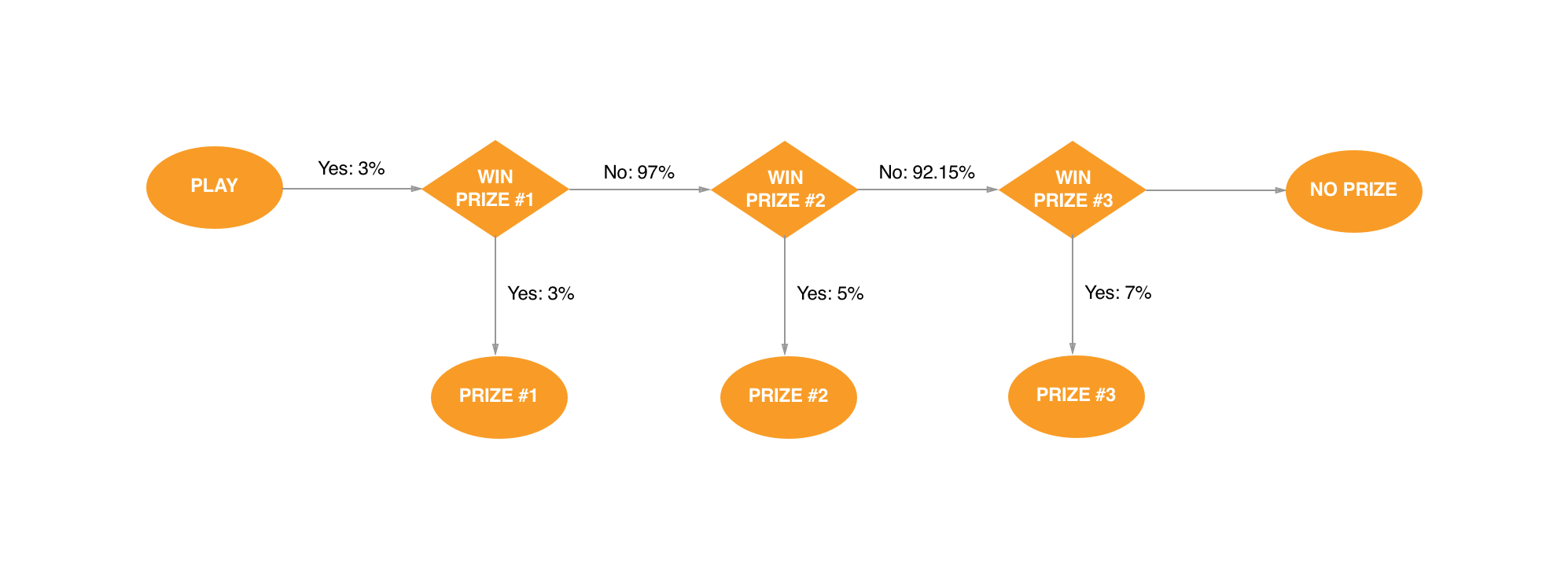Games
Play fun, brand-enhancing games such as Scratcher, Spin-a-wheel, and HTML Games.
Scratcher Game
Play a lottery-like scratcher game in exchange for prizes. The mobile or web application presents a small scratch card and member use their finger to scratch-off one or more coverings that conceal potential winning prizes. Use the Challenge | Definition screen to enter the Prize Picking Strategy, such as Probability, Every Nth Response, First N Response, or Random. You must also enter one or more Prizes for the Game. Each Prize has a Prize Type, Calculation Value that varies depending on the Game’s Prize Picking Strategy, and Limits.
Spin-a-Wheel Game
This feature is coming soon.
HTML Game
Register a Game implemented with HTML technology. The mobile or web application downloads and presents the HTML game to members. Use the Challenge | Definition screen to enter the Prize Picking Strategy, such as Probability, Every Nth Response, First N Response, or Random. You must also upload the HTML game as a Cheetah Digital Loyalty static file and register this HTML file with the Challenge.
For more information about how to integrate an HTML game with Cheetah Digital Loyalty Challenges, contact the Cheetah Digital Loyalty Customer Success team.
Prize Picking Strategy
You can configure the chances of winning by selecting the different prize picking strategy options below and specifying its values.
Probability
In a probability model, a probability percentage is specified to determine the outcome of winning each prize in a game. Each player’s chances are based on the specified probability and are independent of other plays of the game (but for limits described below).
For every play, the player’s outcome is determined by evaluating each prize in order. First, the first prize is evaluated by making a probabilistic win determination based on the probability specified for the prize. If the player did not win the first prize, the second prize is similarly evaluated and so on until either the player wins a prize or all prizes have been evaluated.
For instance, if there are 3 prizes, the probabilities of winning each prize for each player are:
| Prize # | Probability of Winning |
|---|---|
| 1 | 3% |
| 2 | 5% |
| 3 | 7% |
The following diagram shows the process of selecting a winner.

If Player A attempts to win Prize #1, there is a 3% chance of him winning that prize. However, if he did not win Prize #1, the chances of winning the next prize would have to be re-evaluated independently thereby requiring effective probabilities to be computed.
Note: The probability of him winning Prize #2 would be based on 97% instead of 100%.
Every nth Response
The value of n is specified to determine the pattern of winners.
For example, if n is 5 and the total number of players is 15, every 5th player wins. This means that the first winner is the 5th player, the second winner is the 10th player and the third winner is the 15th player.
First n Responses
The first n responses in the specified period (i.e.: day, week, month, year) wins.
For example, if n is 5, the first 5 responses in a month win. The first 5 players would win regardless of the number of players who took part in the game.
Random
Winners are picked by random when the system randomizes each entry by assigning one random number per player.
Additional Limits
In addition to the chance-driven outcome, prizes can be constrained with limits. For each prize you can specify 2 limits:
- Maximum number of prizes to give out overall in a period (i.e.: day, week, month, year) - say 1000 max per week.
- Maximum number of prizes that can be won by a member in a period (i.e.: day, week, month, year) - say 2 max per day. This is in addition to the limit on how many times they can play. The limit applies to one prize if there are multiple prizes.